I have said that I would like to paint all of the DeeZee range for my own collection. I do have painted examples of all of the range for commercial use but some of them are showing their age and I didn’t paint them! I’m in no rush with this project but it does make a nice change from the military stuff that I am working on.
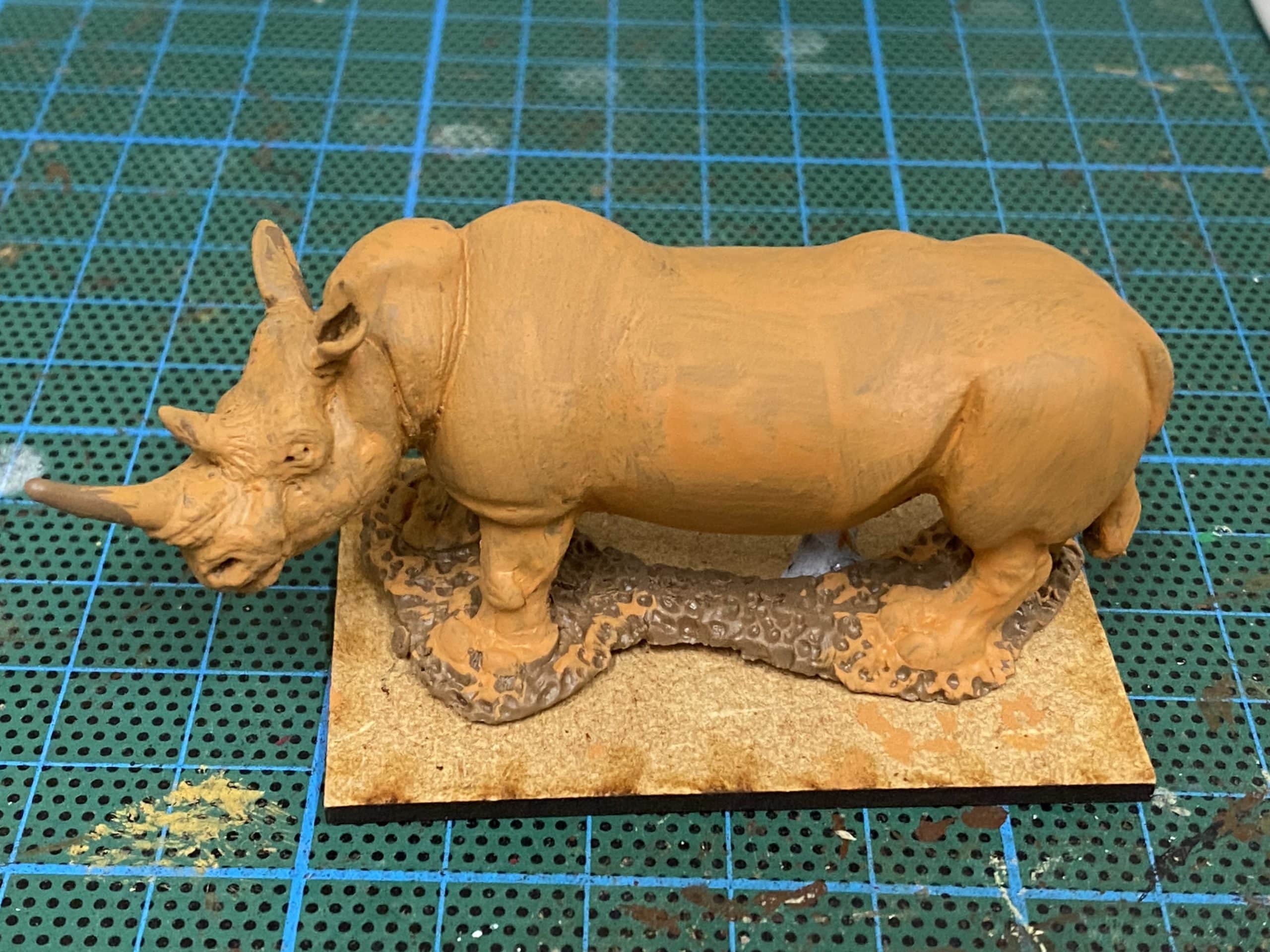
The next model on my bench was the White Rhino, DZ33, a resin model. A bit of research shows that White rhino’s can be either a very pale grey or a light sand colour. I presume that the sandy ones are simply covered in dust and earth, although it does seem that the Southern Rhinos tend to be the Light Brown ones and the Northern Rhinos tend to be Light Grey. Just to add to my confusion, it turns out that White rhinos are so called because according to google:
‘Why is the white rhino not white?
The story has a few variations but it basically states that the early Dutch settlers referred to this rhino as having a “wijde lip” or wide lip. The English mistook the word “wijde” (meaning wide) for “white” and so assumed that they were being called white rhinos by the Dutch.’
If you google images of the white rhino, you will certainly get plenty of variation in colour. I decided to go for the Light Brown finish and after washing and priming the model painted it with Vallejo Light Brown. As you can see from the picture above, I need a few light coats to cover the model.
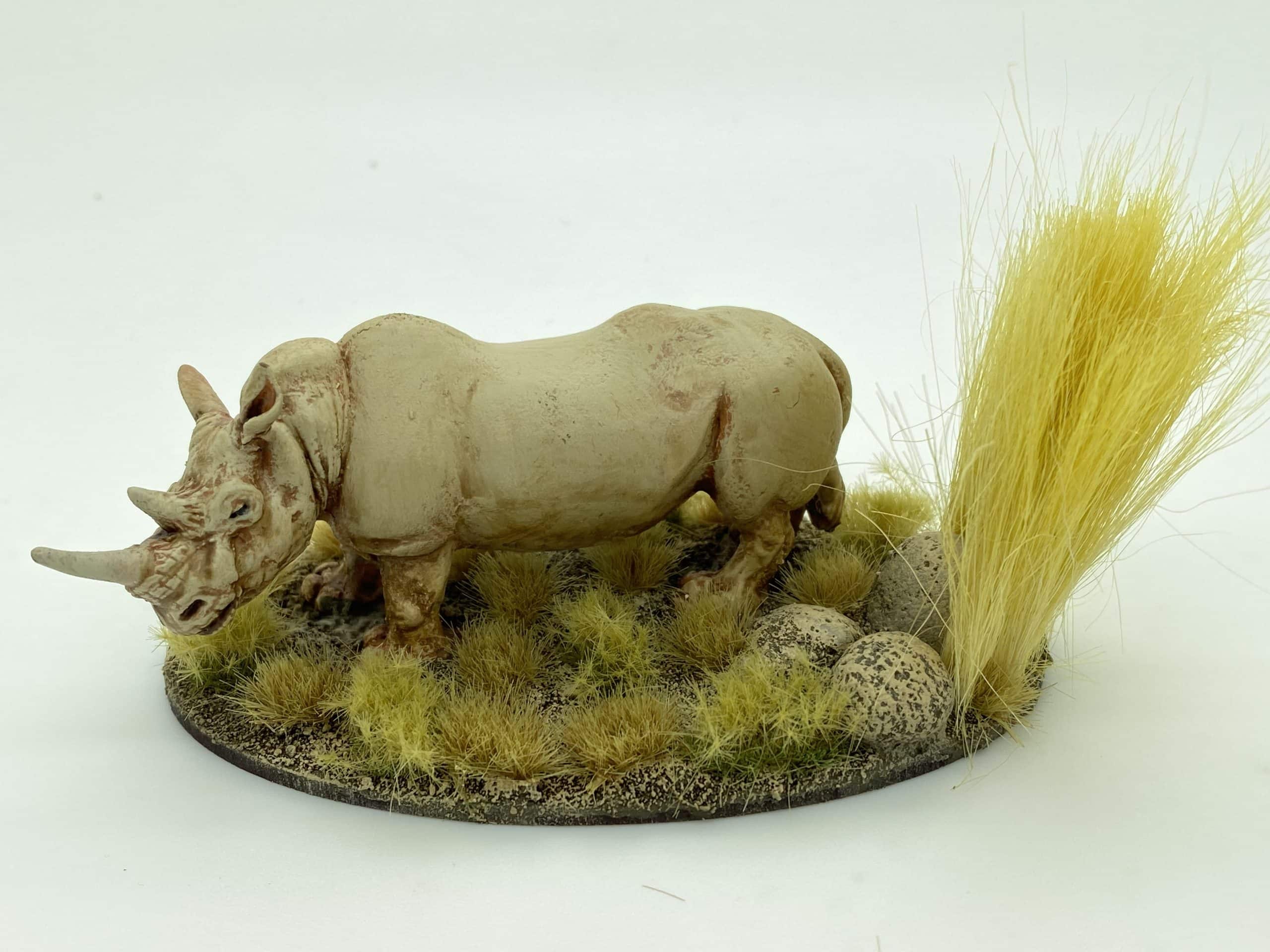
I then proceeded to add Iraqi Sand 70819 to the light brown and after a number of dry brushes , I worked up to pure Iraqi Sand. It really was that simple. I then gave the model a wash with very thinned soft tone ink and added a final coat of Iraqi Sand with white added. I then based the rhino and added plenty of Beige and dry tufts and some long yellow grass. Job done!
While I was in the mood for painting animals, I decided to paint DZ pack 16, Crocodiles. There are three crocs in a pack and I decided to do all three and base them as a group. The models are actually identical so to get a bit od variation, I carefully bent the tails of two of the crocs to make them look a bit different. So long as you are careful when you do this, there is sufficient ‘give’ in the metal to make this a straight forward process.
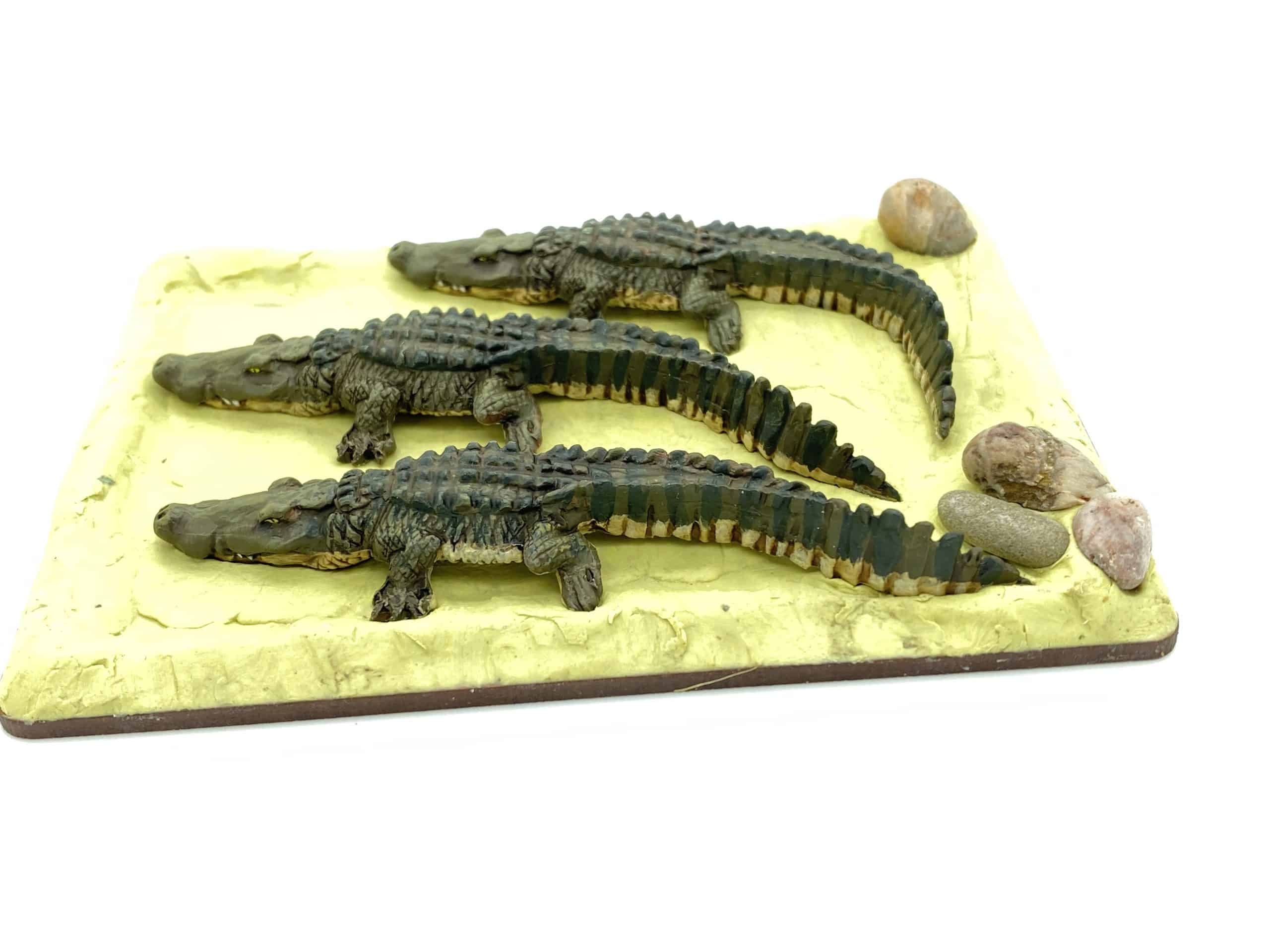
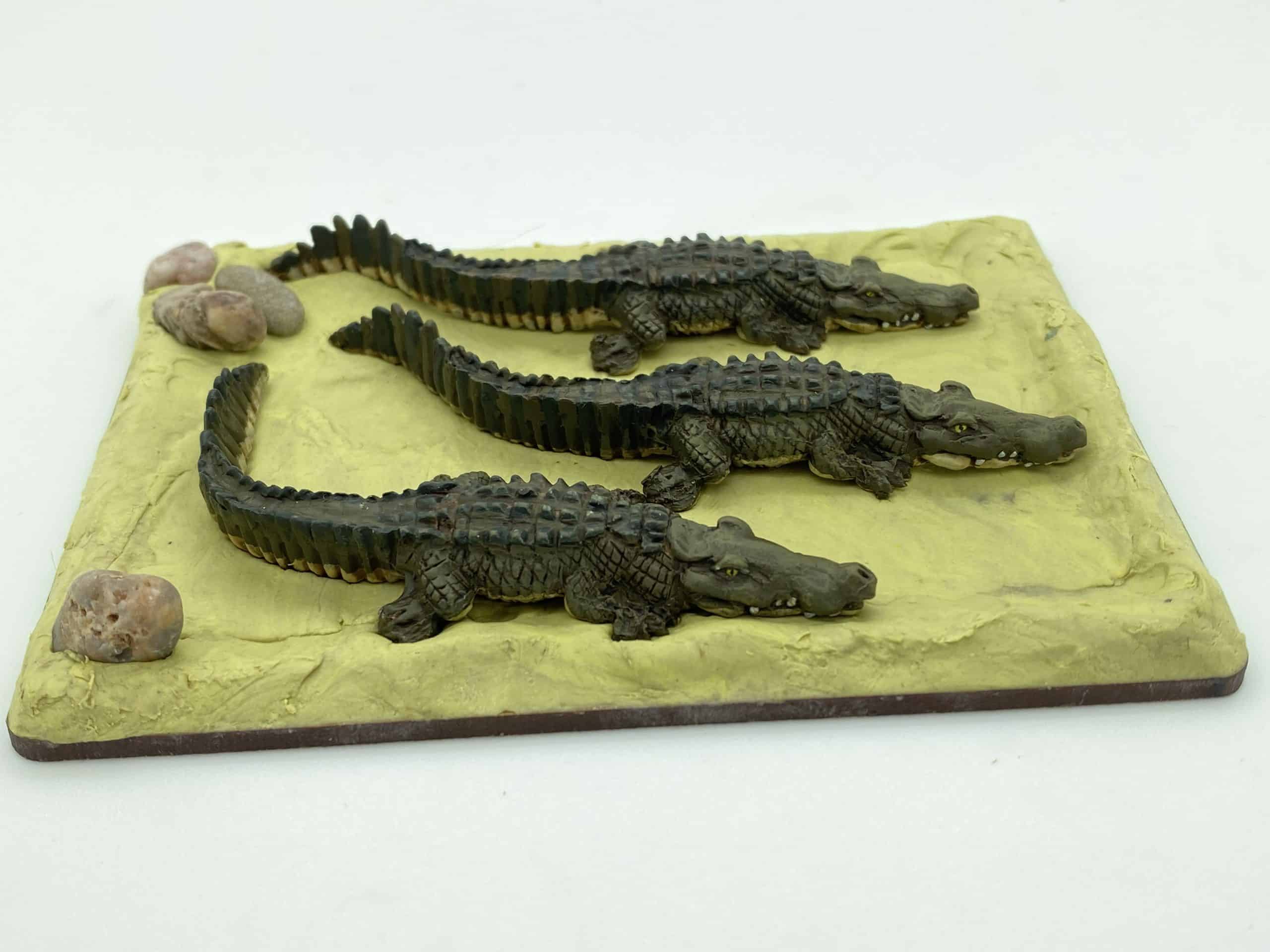
I painted them using similar colours to those that I used when painting the DeeZee Giant crocodile. The only slight difference was that I used Army Painter bone to prime them and used the same colour for the belly. The basing process was also similar. I used milliput and some pebbles to make the ground work and then used clingfilm to protect the models as I pushed the into place to get the indentations. I could them remove the Crocs and paint the base without them being in the way. Here is the link to my earlier blog with details of how I decided to paint the Giant Crocodile along with details of the colours used:
CROCODILE ROCK – PAINTING THE DEEZEE GIANT CROCODILE

I painted the base as per my usual ‘recipe’ using the emulsion colour ‘Dehli Bazaar’, which is my favbourite mud colour, added a dark tone ink wash for some depth and then added a variety of Gamers grass tufts, scatter and some spare jungle plants from my scenery stash. Once the crocs were added back onto the base. I used Vallejo water effects to finish things off.

The final shots ready to add to the listing on my shop.
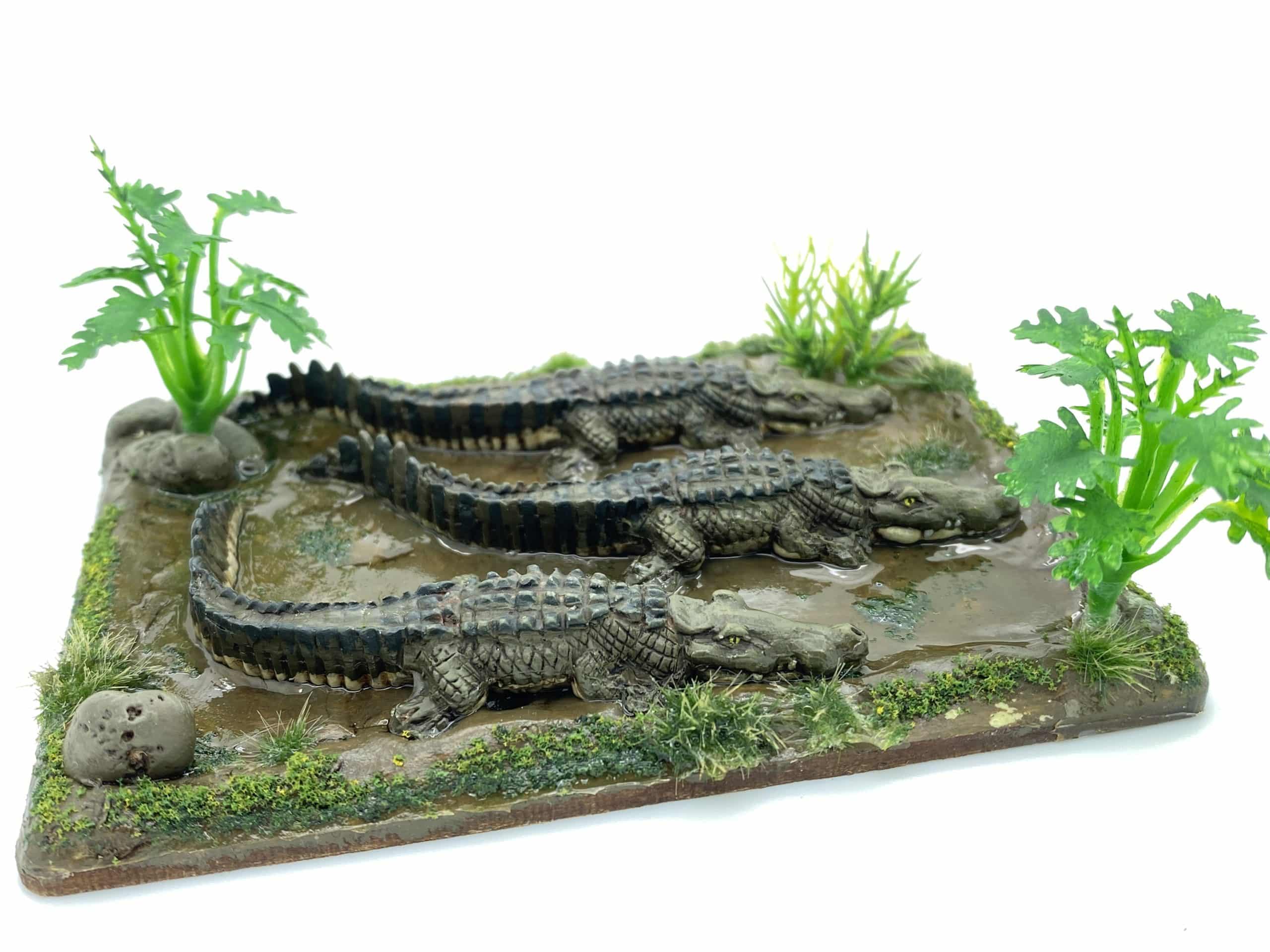
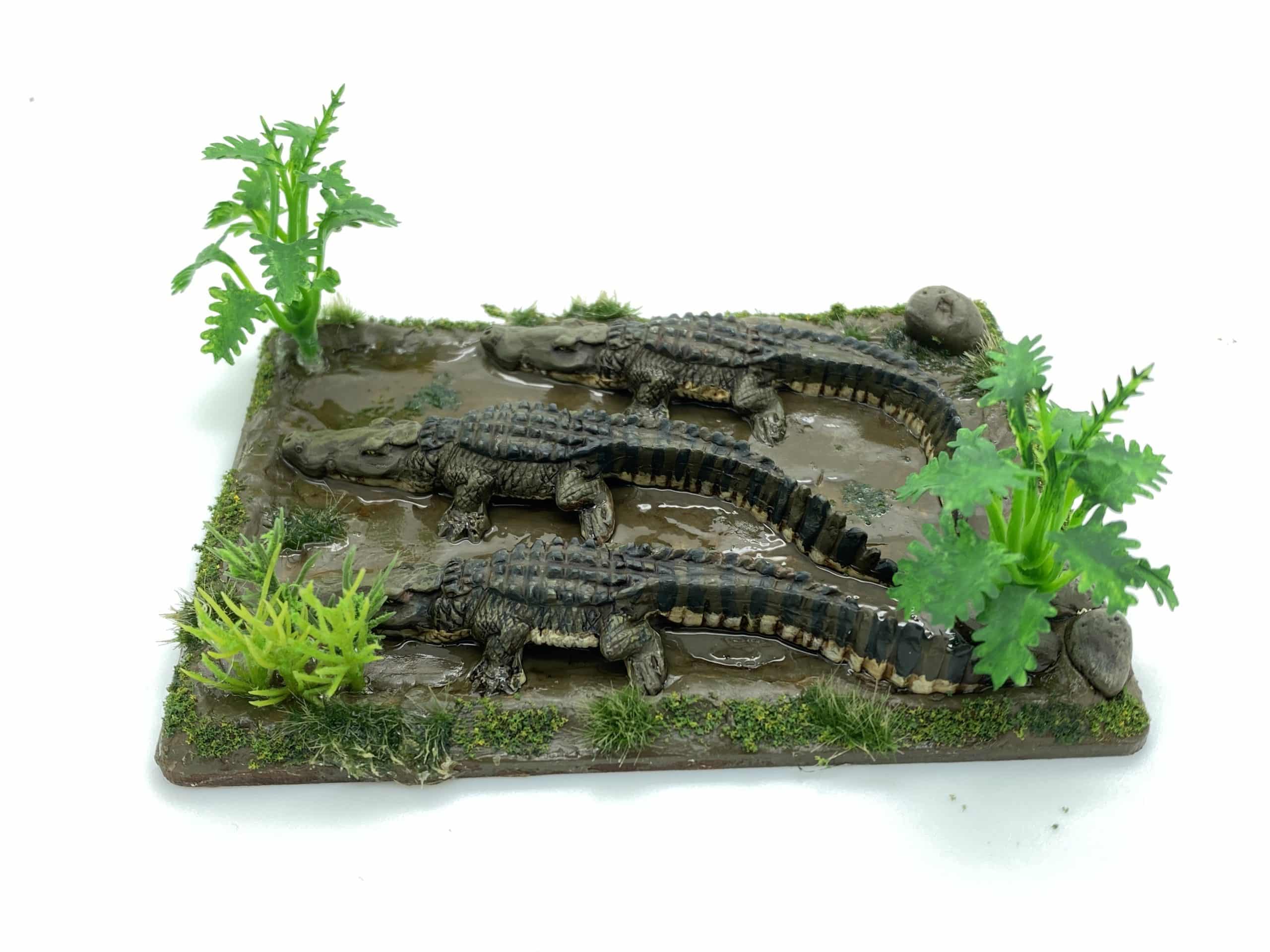
So that’s another pack added to my collection. Back to painting War of the Roses figures for now!
THE COMMERCIAL BIT
I hope that you all enjoy your hobby as much as I do – our web site will have much of what you need! Click here to see our shop.
To see the full range of DeeZee animals, click here:
You can find all the Vallejo Model colour paints here. If you don’t want to browse, just enter the paint number into the shop search bar;
To find water effects and other textures, click here:
You can find Gamers grass here:
If you need Milliput or other fillers, click here:
Happy Modelling!
